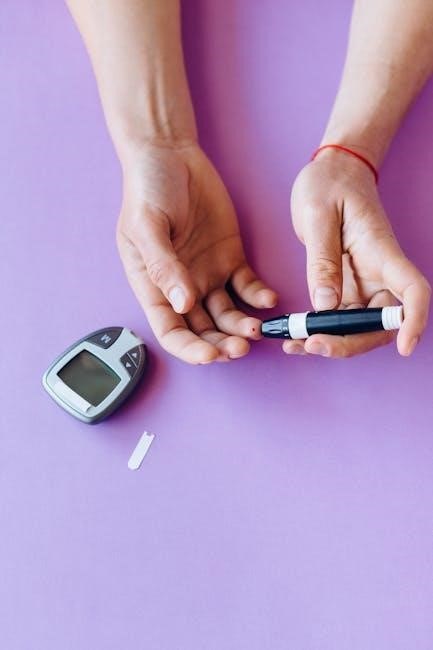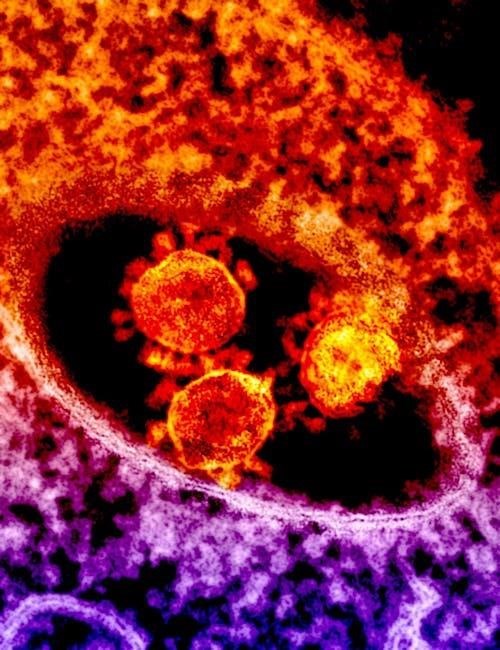
Severs Disease is a common cause of heel pain in adolescents, often due to tight calf muscles and Achilles tendon strain. Gentle stretches can alleviate symptoms.
1.1 Definition and Overview
Severs Disease, also known as calcaneal apophysitis, is a common condition causing heel pain in children and adolescents, particularly during growth spurts. It occurs due to repetitive stress on the growth plate of the calcaneus bone, leading to inflammation and discomfort. Active children, especially those involved in sports, are more prone to this condition. The primary symptoms include pain at the back or bottom of the heel, which may worsen during or after physical activity. Gentle stretching exercises, such as calf and Achilles tendon stretches, are often recommended to alleviate symptoms and improve flexibility. Early intervention is key to managing the condition effectively.
1.2 Importance of Stretching in Managing Severs Disease
Stretching is crucial in managing Severs Disease as it reduces heel pain and improves flexibility. Regular stretching of the calf muscles and Achilles tendon helps alleviate tightness, a common cause of discomfort. Gentle exercises, such as towel stretches and heel dips, can significantly reduce inflammation and promote healing. Consistency in stretching routines is key to preventing recurrence and enhancing mobility. Strengthening exercises, combined with stretching, can also support long-term recovery. By incorporating these practices, children and adolescents can effectively manage symptoms and return to normal activities without persistent pain.

Causes and Symptoms of Severs Disease
Severs Disease causes heel pain in adolescents, often due to tight calf muscles and Achilles tendon strain. Symptoms include discomfort during activity and stiffened calf muscles.
2.1 Understanding the Pathophysiology
Severs Disease arises from inflammation of the growth plate in the heel bone, where the Achilles tendon attaches. This inflammation is often triggered by repetitive stress or tight calf muscles, leading to micro-trauma. During growth spurts, the bones elongate faster than the surrounding muscles and tendons, causing strain on the heel. The resulting inflammation leads to pain and stiffness, particularly during physical activity. Understanding this process helps in targeting stretches and exercises to relieve tension and promote healing. Proper management is essential to prevent long-term discomfort.
2.2 Common Symptoms and Signs
Severs Disease typically presents with heel pain, especially during physical activity or exercise. Pain is often sharp and localized to the back or bottom of the heel. Tenderness or swelling may be noticeable, and limping can occur if pain is severe. Symptoms often worsen with running, jumping, or repetitive stress on the heel. Redness and warmth around the affected area may also be present. These symptoms frequently appear during growth spurts in adolescents and tend to improve with rest. Early recognition of these signs is crucial for effective management.

The Role of Stretching in Managing Severs Disease
Stretching is a key treatment for Severs Disease, offering pain relief, improving flexibility, and reducing muscle tension around the heel and calf. Regular stretching helps alleviate symptoms.
3.1 How Stretching Reduces Heel Pain
Stretching helps reduce heel pain in Severs Disease by elongating tight calf muscles and the Achilles tendon, which are often the primary sources of discomfort. By improving flexibility, stretches decrease the tension pulling on the growth plate, alleviating inflammation and pain. Regular stretching also enhances blood flow, promoting healing and strengthening the surrounding tissues. Gentle exercises like heel dips and towel stretches are particularly effective, as they target the affected areas without causing further strain. Consistent practice of these stretches can significantly lessen the severity of heel pain associated with Severs Disease.
3.2 Improving Flexibility and Range of Motion
Stretching enhances flexibility and range of motion in individuals with Severs Disease by targeting the calf muscles, hamstrings, and Achilles tendon. Tight muscles restrict movement and exacerbate heel pain, while stretching lengthens these tissues, allowing for smoother, pain-free motion. Exercises like standing calf stretches and seated hamstring stretches are particularly beneficial, as they gently extend the muscles without overexertion. Improved flexibility not only reduces discomfort but also supports overall mobility, making daily activities and sports participation more comfortable for those managing Severs Disease. Regular stretching helps maintain optimal muscle balance and joint function.

Calf Stretches for Severs Disease
Calf stretches are essential for managing Severs Disease, reducing heel pain and improving flexibility. Standing, seated, and towel-assisted stretches target the calf muscles effectively.
4.1 Standing Calf Stretch
The standing calf stretch is an effective exercise for relieving heel pain associated with Severs Disease. To perform, face a wall and lean forward, placing hands on the wall for support. Extend one leg behind, keeping the heel on the ground and the knee straight. Gently stretch the calf by bending the front knee until a mild stretch is felt in the back leg. Hold for 30 seconds and repeat on the other side. This stretch helps reduce tension in the calf muscles and Achilles tendon, promoting flexibility and pain relief. Regular practice is recommended.
4.2 Seated Calf Stretch
The seated calf stretch is another effective method to alleviate heel pain and tightness in the Achilles tendon. Sit on the floor with legs extended straight. Loop a towel around the ball of one foot and gently pull toward the body, keeping the knee straight. Hold for 30 seconds and switch legs. This stretch targets the calf muscles and Achilles tendon, improving flexibility. Regular practice can help reduce discomfort associated with Severs Disease. It is a simple yet effective exercise that can be done at home, promoting healing and preventing recurrence. Consistency is key for optimal results.
4.3 Calf Stretch Using a Towel
A towel can be an excellent tool for stretching the calf muscles and Achilles tendon. Sit on the floor with your legs extended straight. Loop a towel around the ball of one foot and gently pull it toward your body, keeping the knee straight. Hold for 30 seconds and switch legs. This stretch helps reduce tightness and improves flexibility. It is particularly effective for individuals with Severs Disease, as it targets the areas most affected by heel pain. Regular practice can lead to significant relief and improved mobility. Consistency is key to achieving long-term benefits.
Achilles Tendon Stretches
Achilles tendon stretches are essential for managing Severs Disease, targeting the tightness that contributes to heel pain. Regular stretching improves flexibility and reduces discomfort.
5.1 Heel Drop Stretch
The heel drop stretch effectively targets the Achilles tendon and calf muscles, providing relief from Severs Disease symptoms. To perform, stand on the edge of a stair or sturdy platform with heels hanging off. Slowly lower one heel downward until a gentle stretch is felt, holding for 30 seconds. Repeat on the other side. This exercise helps improve Achilles tendon flexibility and reduces tightness, which is crucial for managing heel pain associated with Severs Disease. Regular practice can significantly enhance comfort and mobility.
5.2 Achilles Tendon Stretch with a Wall
The Achilles tendon stretch with a wall is an effective exercise for managing Severs Disease. Stand facing a wall, placing both hands on it for support. Extend one leg behind you, keeping the heel on the ground and the knee straight. Gently lean forward, bending the front knee, until a stretch is felt in the Achilles tendon and calf. Hold for 30 seconds and repeat on the other side. This stretch improves flexibility and reduces tension in the Achilles tendon, providing relief from heel pain associated with Severs Disease. Regular practice enhances mobility and comfort.

Heel Stretches and Exercises
Heel stretches and exercises target the calf muscles and Achilles tendon, helping to alleviate heel pain associated with Severs Disease. Regular practice enhances flexibility.
6;1 Heel Dips Exercise
Heel dips are an effective stretch for alleviating heel pain caused by Severs Disease. To perform this exercise, stand on the edge of a stair or step with your heels hanging off. Slowly lower your heels below the step until you feel a gentle stretch in your calf and Achilles tendon. Hold this position for 30 seconds, then raise back up. Repeat 2-3 times. This exercise helps stretch the Achilles tendon and calf muscles, reducing tension and discomfort. Proper form is essential to avoid injury and maximize benefits. Regular practice can significantly improve flexibility.
6.2 Step Stretch for Heel Pain
The step stretch is a simple yet effective exercise for heel pain associated with Severs Disease. Stand on a sturdy step or platform with your heels hanging off the edge. Slowly lower one heel downward until a gentle stretch is felt in the calf and Achilles tendon. Hold the stretch for 20-30 seconds, then return to the starting position. Repeat on the other side. This exercise helps improve flexibility and reduces tension in the lower leg muscles, providing relief from heel pain when performed consistently. Proper form ensures safety and maximizes effectiveness. Regular practice is recommended.

Hamstring Stretches
Hamstring stretches are essential for managing Severs Disease, as tight hamstrings can contribute to heel pain. Simple exercises improve flexibility and reduce muscle tightness. Regular practice helps.
7.1 Standing Hamstring Stretch
The standing hamstring stretch is a simple yet effective exercise for Severs Disease. Stand facing a wall, feet shoulder-width apart. Lean forward slightly, bending at the hips, and slide one foot back, keeping the heel on the ground. Hold for 30 seconds and switch legs. This stretch targets the hamstrings and calves, improving flexibility and reducing tension that contributes to heel pain. Regular practice helps alleviate discomfort and supports overall lower limb mobility;
7.2 Seated Hamstring Stretch
The seated hamstring stretch is an effective exercise for improving flexibility and reducing tension in the hamstrings and calves, which can contribute to Severs Disease symptoms. Sit on the floor with legs extended straight in front of you. Lean forward from the hips, reaching for your toes, and hold for 30 seconds. This stretch helps relieve heel pain by loosening tight hamstrings and calf muscles. Regular practice enhances mobility and supports overall lower limb health, making it a valuable addition to a daily stretching routine for managing Severs Disease.

Dynamic Stretches for Severs Disease
Dynamic stretches, like high knees and leg swings, improve circulation and reduce muscle stiffness, aiding in the management of Severs Disease by preparing muscles for activity.
8.1 High Knees
High knees are an effective dynamic stretch that targets the calf muscles and Achilles tendon, key areas affected by Severs Disease. To perform this exercise, stand with feet hip-width apart and bring one knee towards your chest while keeping the other foot on the ground. Hold for a few seconds, then lower and repeat with the opposite leg. This movement enhances blood flow and reduces muscle tension, helping to alleviate heel pain associated with Severs Disease. Regular practice can improve flexibility and prevent recurrence of symptoms.
8.2 Leg Swings
Leg swings are a dynamic stretch that improves circulation and reduces stiffness in the lower limbs, benefiting those with Severs Disease. Stand with your feet hip-width apart and hold onto a sturdy object for balance. Slowly swing one leg forward and backward, then switch to the other leg. Repeat for 10-15 repetitions on each side. This exercise enhances flexibility in the calf muscles and Achilles tendon, helping to alleviate heel pain. Perform leg swings gently to avoid overexertion, making them an ideal warm-up or cool-down activity for children with Severs Disease. Consistency is key for optimal results.

Stretching Techniques and Tips
Proper stretching techniques are essential for managing Severs Disease. Hold each stretch for 30 seconds, breathe deeply, and avoid bouncing to maximize benefits and prevent injury.
9.1 Duration and Frequency of Stretches
For effective management of Severs Disease, stretches should be held for 30 seconds and repeated 2-3 times per session. Ideally, perform these exercises twice daily, once in the morning and once before physical activity. Consistency is key to reducing heel pain and improving flexibility. Over time, this routine can help prevent the recurrence of symptoms and promote long-term relief. Remember, regularity and proper form are crucial for optimal results.
9.2 Proper Form and Safety
Maintaining proper form during stretches is essential to avoid injury and maximize benefits. Start slowly, focusing on controlled movements, and avoid bouncing, which can strain muscles. Use props like walls or towels for support when needed. Ensure the stretched leg remains straight to target the correct muscles. If pain occurs, stop the stretch immediately. Supervise children during exercises to ensure they follow proper techniques. Consulting a healthcare professional before starting a new stretching routine is advisable, especially for severe cases. Prioritize gentle, gradual stretching to promote healing and prevent overexertion. Safety and form are critical for effective relief.
Strengthening Exercises to Complement Stretches
Strengthening exercises complement stretching by building muscle resilience, enhancing recovery, and supporting long-term heel health in managing Severs Disease effectively.
10.1 Calf Strengthening Exercises
Calf strengthening exercises are crucial for managing Severs Disease, as they enhance muscle resilience and support recovery. Heel raises and calf presses are effective, targeting the gastrocnemius and soleus muscles. Resistance bands or weights can intensify workouts. Consistency is key to improving muscle strength and reducing heel pain. These exercises should be performed 2-3 times weekly, gradually increasing intensity. Strengthening complements stretching by promoting long-term heel health and preventing recurrence. Regular practice helps stabilize the Achilles tendon, ensuring better mobility and reduced discomfort during physical activities. Always consult a professional to tailor exercises to individual needs.
10.2 Ankle Strengthening Exercises
Ankle strengthening exercises complement calf stretches by improving joint stability and reducing Severs Disease symptoms. Toe raises, ankle alphabet, and resistance band workouts target key muscles. These exercises enhance proprioception, crucial for preventing injuries. Perform 3 sets of 10-15 repetitions daily. Strengthening the ankles supports the Achilles tendon, alleviating strain. Consistency aids in restoring normal movement and reducing pain during activities like running or jumping. Incorporate these exercises into a daily routine for optimal recovery and long-term heel health. Always combine with stretching for comprehensive management.
Foam Rolling for Calf and Achilles Tendon
Foam rolling is a self-massage technique that reduces muscle tension and improves circulation. Regular use on the calf and Achilles tendon can ease Severs Disease pain.
11.1 Proper Technique for Foam Rolling
Proper foam rolling involves placing the roller under the calf and Achilles tendon. Slowly roll back and forth, applying moderate pressure. Focus on areas of tension or pain. Avoid rolling behind the knee to prevent discomfort. Use smooth, controlled movements to ensure effectiveness. Hold the roller on tender spots for 20-30 seconds to release muscle tightness. Breathe deeply to relax during the process. Regular foam rolling can improve circulation and reduce muscle stiffness associated with Severs Disease. Consistency is key for optimal relief and prevention of heel pain.
11.2 Benefits of Foam Rolling in Severs Disease
Foam rolling offers numerous benefits for managing Severs Disease. It enhances blood flow to the affected areas, reducing inflammation and promoting healing. Regular use can alleviate muscle tightness in the calves and Achilles tendon, common causes of heel pain. Foam rolling also improves flexibility and range of motion, making daily activities and sports participation more comfortable. Additionally, it helps prevent recurrence by maintaining muscle relaxation and reducing strain on the growth plate. Incorporating foam rolling into a daily routine can significantly enhance the effectiveness of stretching exercises for Severs Disease management. Consistency is key to achieving long-term relief.

Preventing Severs Disease Recurrence
Preventing Severs Disease recurrence involves regular stretching, proper footwear, and orthotics to reduce strain on the growth plate. Consistency and professional advice are key.
12.1 Regular Stretching Routine
A regular stretching routine is essential for preventing Severs Disease recurrence. Daily calf, Achilles, and hamstring stretches can improve flexibility and reduce tension on the growth plate. Incorporating activities like heel dips, towel stretches, and wall-assisted exercises can also help. Consistency is key, as irregular stretching may lead to tightness and increased risk of recurrence. Parents and athletes should ensure that stretching becomes a habitual part of daily routines, especially before and after physical activities. This proactive approach minimizes the likelihood of heel pain returning.
12.2 Proper Footwear and Orthotics
Proper footwear and orthotics play a vital role in preventing Severs Disease recurrence. Shoes with adequate arch support and cushioning can reduce stress on the heel. Orthotic inserts, such as custom or over-the-counter arch supports, help redistribute pressure and alleviate pain. Avoiding flat or poorly cushioned shoes is crucial, especially for active children. Additionally, orthotics can correct biomechanical issues like pronation, which may contribute to heel strain. Combining proper footwear with regular stretching creates a comprehensive approach to managing and preventing Severs Disease symptoms effectively. This proactive measure ensures long-term comfort and mobility for individuals prone to heel pain.

When to Seek Professional Help
Consult a healthcare professional if pain persists despite stretching or worsens, causing limited mobility or severe discomfort, to rule out complications and ensure proper treatment.
13.1 Persistent Pain Despite Stretching
If your child experiences persistent heel pain that does not improve with consistent stretching and rest, it may indicate an underlying issue requiring professional evaluation. Persistent pain can signal unresolved inflammation, stress fractures, or other complications. Look for signs such as intense pain during activity, limited mobility, or pain that worsens over time. Consult a healthcare provider to rule out severe conditions and explore further treatment options, such as orthotics, physical therapy, or medication. Early intervention is crucial to prevent long-term consequences and ensure proper healing.
13.2 Severe Symptoms and Limited Mobility
When a child exhibits severe symptoms like intense heel pain, swelling, or difficulty walking, it is crucial to seek immediate professional help. Limited mobility may indicate advanced inflammation or structural issues. Severe cases can hinder daily activities and sports participation. A healthcare provider may recommend imaging tests, custom orthotics, or physical therapy to address the underlying cause. Ignoring severe symptoms can lead to prolonged recovery and potential long-term damage. Prompt medical intervention ensures effective treatment and restores mobility, allowing the child to return to normal activities safely and efficiently.
Severs Disease can be effectively managed with consistent stretching and proper care. Regular exercises and prevention strategies help alleviate symptoms and promote long-term recovery in adolescents.
14.1 Summary of Key Points
Severs Disease, a common cause of heel pain in adolescents, is effectively managed with stretching exercises that target calf muscles and the Achilles tendon. Regular stretching improves flexibility, reduces pain, and prevents recurrence. Strengthening exercises, proper footwear, and orthotics further support recovery. It’s essential to hold stretches for at least 30 seconds and repeat as recommended. Consistency in these practices, along with professional guidance, ensures optimal outcomes for managing Severs Disease and promoting long-term relief from symptoms.
14.2 Encouragement for Consistent Stretching Practice
Consistency is key in managing Severs Disease. Regular stretching helps alleviate pain, improves flexibility, and prevents recurrence. Encourage your child to incorporate these exercises into their daily routine, even after symptoms subside. Motivate them to stay committed, as consistent practice strengthens muscles and promotes long-term relief. Celebrate small progress and remind them that stretching is a proactive step toward healthier, pain-free movement. By maintaining a regular routine, they can effectively manage Severs Disease and reduce the risk of future episodes.